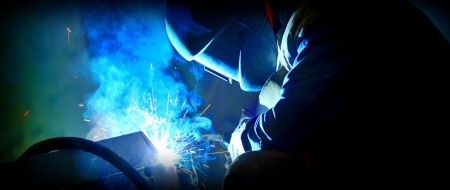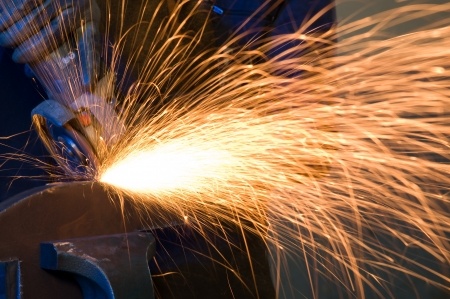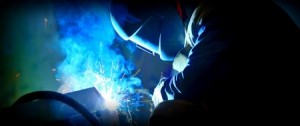Stick welding, also known as shielded metal arc welding, has been around for a long time and used for numerous reasons. Although there have been great advancements in welding technology, stick welding still remains a process one must know and understand.
Choosing the right machine to use is an important process. Amperage draw and duty cycle are very important when choosing your machine. You should also consider the size and portability of the machine. Don’t forget that there are numerous electrical hookup volts available; this will make a difference whether you’re using single or three-phase power.
When choosing an electrode, the position of the weld and the type of material you are welding need to be considered. A vertical weld will probably require a different electrode than a flat position. You should also check if the surface material has contaminates such as oil or rust as some electrodes can handle these situations better than others. The most common stick electrodes are 6010 (a deep penetrating electrode), 7014 (offers stable arc and easy to use), and 7018 (low-hydrogen electrode used for industrial code work).
When setting up your machine, make sure to choose the right polarity. One of the most common mistakes is in choosing the incorrect polarity. Electrodes usually come with packaging or a material data sheet that lists the proper polarity. When the range is set too high, you’ll have an unstable arc and a lot of spatter. On the other hand, you’ll have a hard time starting or maintaining an arc when using a current that’s too low.
Striking an arc in stick welding is fairly simple; just brush the end of the electrode against the metal material. The arc length will vary by the electrode type you are using. Typically, there’s about a 1/4 in. distance between the end of the electrode and the base material. An arc can be put out by having the electrode too close to the material you’re welding. Having an electrode too far from the work piece will cause a lack of penetration which will cause an unfilled void in the joint. Using a proper welding technique of dragging the arc toward you at a 10 to 30-degree angle will help in the distance control of your arc and base material.
In closing, stick welding is still a valuable process for numerous welding needs. Even though TIG, MIG, and STIR Welding are now all the rage, stick welding is still popular due to its low investment cost, ease of use, and it’s tolerance of surface challenges on base materials.



